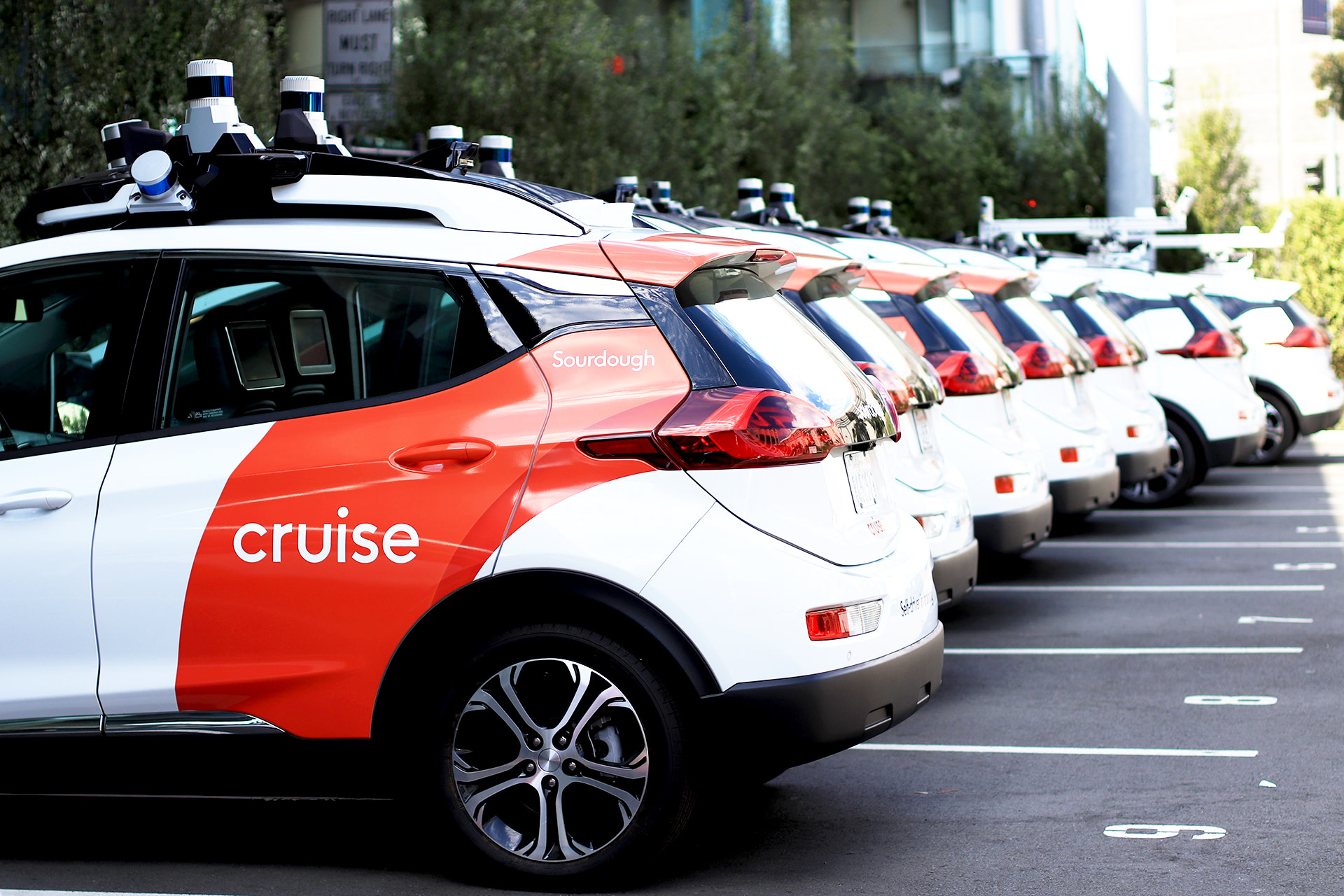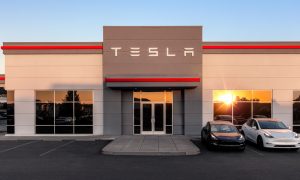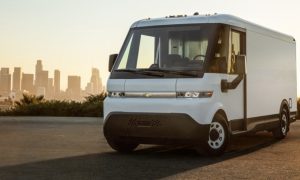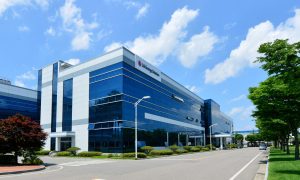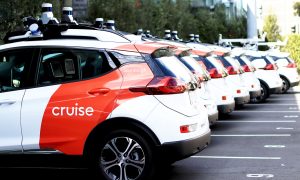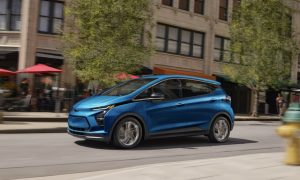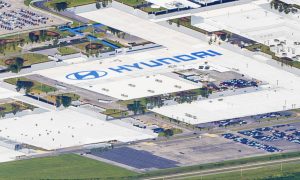Recently, reports emerged stating that General Motors’ self-driving unit, Cruise LLC, was dismissing nine top executives amid an ongoing probe. A memo from Cruise President Mo Elshenawy, which was shared by the self-driving unit online, shows that the nine executives were but the tip of the iceberg in the company’s efforts to strategize its operations.
Cruise has had a very eventful year. In August, Cruise received approval to deploy its self-driving robotaxis 24/7 in San Francisco. Following an incident when one of the company’s self-driving robotaxis crashed into a firetruck, however, the California Department of Motor Vehicles (DMV) advised Cruise to cut its fleet in the city by 50%.
Things took a turn for the worse in October when a pedestrian, a woman, was initially struck by a human-driven car. The impact was so notable that the woman was thrown into the path of a Cruise robotaxi, which ended up running over the pedestrian. The Cruise robotaxi detected a collision and proceeded to pull over, dragging the woman about 20 feet further. The pedestrian was taken to SF General Hospital with serious injuries.
By late October, the California DMV advised Cruise to halt all its operations in San Francisco. Since then, Cruise has implemented a number of changes. Leaders such as former Chief Executive Officer (CEO) Kyle Vogt and Chief Product Officer Daniel Kan also left the company.
In his memo, Cruise President Mo Elshenawy noted that the company has now updated its operating plans. These updates include a workforce reduction that affects about 24% of the company’s staff. Bloomberg News estimated that Cruise’s workforce reduction efforts would likely affect about 900 full-time workers. Most of the ones affected will be from operations, though some technology positions will also be affected. Engineers, however, will mostly be safe.
Following is Elshenawy’s memo to Cruise staff, as shared by the GM self-driving unit in its official blog. The document covers the company’s decision behind its workforce reduction, as well as what those affected by the update could expect in the coming months.
In October, Cruise paused operations to take time to examine our processes, systems and tools and improve how we operate. While we remain committed to commercialization, we will approach it within a thoughtful and achievable time frame—with safety as our north star.
As a result of our updated operating plans, today Cruise shared the difficult news that we are making staff reductions impacting 24% of full-time Cruisers. This reflects our new future and a more deliberate go-to-market path, meaning less immediate need for field, commercial operations and corporate staffing.
As we look forward, the road to successful commercialization is dependent on defining and meeting an exceptional performance and heightened safety bar. Cruise is committed to playing a key role in defining these standards with the input of our regulators, our communities and other AV industry leaders.
We are extremely grateful to the departing employees who have helped further our mission, and the remaining Cruisers who will carry that mission forward in our next chapter.
Below is a letter from Mo Elshenawy, President and CTO of Cruise, that went to all employees today:
Cruisers:
We knew this day was coming, but that does not make it any less difficult—especially for those whose jobs are affected.
Today, we are making staff reductions that will affect 24% of full-time Cruisers, through no fault of their own. We are simplifying and focusing our efforts to return with an exceptional service in one city to start with and focusing on the Bolt platform for this first step before we scale. As a result, we are reducing our employee counts in operations and other areas. These impacts are largely outside of engineering, although some Tech positions are impacted also. As you might have learned, yesterday, we took action to part ways with several SLT members.
Craig and I believe this is a necessary step, and our leadership team and the board are fully aligned with how our go-forward U.S. staffing needs will map to the priorities ahead of us, and set up Cruise for the long term. We have also ended additional assignments of contingent workers who support our driverless operations, as we refined our go forward plans.
In a few moments, you will receive an email letting you know whether or not you are affected by this staffing reduction. If you are impacted, you will get details about what happens next in a subsequent email.
Please know that our first priority is to treat departing Cruisers with fairness, and I will describe more about how we are doing that below.
I also want to explain why we are making these reductions, and what this means for Cruise moving forward.
Cruise today vs Cruise moving forward
As we’ve shared, our goal is to focus our work on a fully driverless L4 service that meets a new AV performance bar, prioritize the Bolt platform, relaunch ridehail in one city to start, and enhance our safety standards and processes before we scale. We are ceasing work on the Origin MY24 but not losing sight of our work on future programs. This is very different from our prior plans to expand into more than a dozen new cities in 2024.
As a result of our decision to slow down commercialization, we are restructuring to focus on delivering the improvements to our tech and vehicle performance that will build trust in our AVs.
Many of you will be impacted because we aren’t commercializing as quickly, and therefore don’t need support in certain cities or facilities. In other cases, we restructured teams based on the work we’re prioritizing. We didn’t take any of these decisions lightly, though I know that isn’t much of a consolation if you’re someone affected by the actions we are taking today.
How we’re helping departing employees
We know there’s no “good” way to lay off employees, but treating people fairly on their way out was a key principle that guided our approach, and our top priority was determining how we could provide a strong severance package, while treating departing Cruisers with respect. In short, we are offering departing Cruisers pay, at minimum, through April 8, 2024 (approximately 16 weeks), plus continued subsidized health benefits, RSU vesting, the January 5 bonus, and additional immigration support for those holding work visas.
Severance details include:
- Severance pay: Departing employees will remain on payroll through Feb. 12 and are eligible for an additional 8 weeks of pay, with long-term employees offered an additional 2 weeks’ pay per every year at Cruise over 3 years.
- Bonus: All impacted employees will receive their 2023 bonus (eligible target payout) on Jan. 5, 2024.
- Medical, Dental, Vision: we will provide Cruisers and their dependents who are currently enrolled in Cruise benefits the option to receive Cruise-subsidized medical, dental and mental health/EAP benefits through the end of May.
- Perks Wallet: We will give Cruisers two months to access the perks most important to them via our Perks Wallet.
- 401(k): We will give Cruisers two months to continue contributions into their 401(k) plan, including our employer match.
- RSU vesting: All Cruisers, including those impacted and those remaining, will receive their January 15th RSU vest. In addition, we will provide liquidity for all of these January 15th shares in Q1 based on an updated 409A fair market valuation that we will conduct in the first quarter. Tax obligations for these January 15th vested shares will not be incurred until we provide you liquidity for these shares.
- Career support: Departing employees will receive a year-long subscription to LinkedIn Premium, and we will create an opt-in alumni directory to connect potential employers with impacted Cruisers. Cruise Talent Acquisition will also run workshops on resume building, networking, and interview prep with departed Cruisers in the new year.
- Immigration support: We are offering continued time on payroll through March 24 in lieu of a lump-sum severance payment to allow visa holders additional time to help transition and manage their immigration status. Eligibility for the Perks Wallet and 401(k) contributions and match will also continue through this time. We also have dedicated support lined up to help Cruisers based on their needs.
Our message to other employers in the market is that each departing Cruiser is a talented, driven, and mission-focused team member who will contribute and achieve great things elsewhere. They are departing us through no fault of their own. Other companies will be privileged to have these professionals on their teams, as we were privileged to have them here during their time at Cruise.
What’s next
As mentioned, in a few moments, you will receive an email letting you know whether or not you are affected by this staffing reduction, and if you are impacted, you will get details about what happens next. I am so sorry we have to do this by email, as I would prefer that we have a conversation with each of you. Unfortunately, given the scale of this change, this approach allows us to communicate to those who are impacted at the same time. We know you will want to say goodbye to your colleagues, so you will have access to Cruise email and Zoom for the next couple of hours (until 10am PT).
This is one of the hardest days we’ve had so far because so many talented people are leaving. I’m thankful we had the chance to work together, and I know I speak on behalf of so many Cruisers who will be reaching out to those departing to help with our professional networks and references. On behalf of the SLT, the Cruise Board and GM, I’m truly grateful to everyone who has played a role in building Cruise and who has poured so much into the promise of making our roads safer and our world better.
Mo
Don’t hesitate to contact us with news tips. Just send a message to simon@teslarati.com to give us a heads up.
Elon Musk
Why Tesla’s Q3 could be one of its biggest quarters in history
Tesla could stand to benefit from the removal of the $7,500 EV tax credit at the end of Q3.

Tesla has gotten off to a slow start in 2025, as the first half of the year has not been one to remember from a delivery perspective.
However, Q3 could end up being one of the best the company has had in history, with the United States potentially being a major contributor to what might reverse a slow start to the year.
Earlier today, the United States’ House of Representatives officially passed President Trump’s “Big Beautiful Bill,” after it made its way through the Senate earlier this week. The bill will head to President Trump, as he looks to sign it before his July 4 deadline.
The Bill will effectively bring closure to the $7,500 EV tax credit, which will end on September 30, 2025. This means, over the next three months in the United States, those who are looking to buy an EV will have their last chance to take advantage of the credit. EVs will then be, for most people, $7,500 more expensive, in essence.
The tax credit is available to any single filer who makes under $150,000 per year, $225,000 a year to a head of household, and $300,000 to couples filing jointly.
Ending the tax credit was expected with the Trump administration, as his policies have leaned significantly toward reliance on fossil fuels, ending what he calls an “EV mandate.” He has used this phrase several times in disagreements with Tesla CEO Elon Musk.
Nevertheless, those who have been on the fence about buying a Tesla, or any EV, for that matter, will have some decisions to make in the next three months. While all companies will stand to benefit from this time crunch, Tesla could be the true winner because of its sheer volume.
If things are done correctly, meaning if Tesla can also offer incentives like 0% APR, special pricing on leasing or financing, or other advantages (like free Red, White, and Blue for a short period of time in celebration of Independence Day), it could see some real volume in sales this quarter.
You can now buy a Tesla in Red, White, and Blue for free until July 14 https://t.co/iAwhaRFOH0
— TESLARATI (@Teslarati) July 3, 2025
Tesla is just a shade under 721,000 deliveries for the year, so it’s on pace for roughly 1.4 million for 2025. This would be a decrease from the 1.8 million cars it delivered in each of the last two years. Traditionally, the second half of the year has produced Tesla’s strongest quarters. Its top three quarters in terms of deliveries are Q4 2024 with 495,570 vehicles, Q4 2023 with 484,507 vehicles, and Q3 2024 with 462,890 vehicles.
Elon Musk
Tesla Full Self-Driving testing continues European expansion: here’s where
Tesla has launched Full Self-Driving testing in a fifth European country ahead of its launch.

Tesla Full Self-Driving is being tested in several countries across Europe as the company prepares to launch its driver assistance suite on the continent.
The company is still working through the regulatory hurdles with the European Union. They are plentiful and difficult to navigate, but Tesla is still making progress as its testing of FSD continues to expand.
Today, it officially began testing in a new country, as more regions open their doors to Tesla. Many owners and potential customers in Europe are awaiting its launch.
On Thursday, Tesla officially confirmed that Full Self-Driving testing is underway in Spain, as the company shared an extensive video of a trip through the streets of Madrid:
Como pez en el agua …
FSD Supervised testing in Madrid, Spain
Pending regulatory approval pic.twitter.com/txTgoWseuA
— Tesla Europe & Middle East (@teslaeurope) July 3, 2025
The launch of Full Self-Driving testing in Spain marks the fifth country in which Tesla has started assessing the suite’s performance in the European market.
Across the past several months, Tesla has been expanding the scope of countries where Full Self-Driving is being tested. It has already made it to Italy, France, the Netherlands, and Germany previously.
Tesla has already filed applications to have Full Self-Driving (Supervised) launched across the European Union, but CEO Elon Musk has indicated that this particular step has been the delay in the official launch of the suite thus far.
In mid-June, Musk revealed the frustrations Tesla has felt during its efforts to launch its Full Self-Driving (Supervised) suite in Europe, stating that the holdup can be attributed to authorities in various countries, as well as the EU as a whole:
Tesla Full Self-Driving’s European launch frustrations revealed by Elon Musk
“Waiting for Dutch authorities and then the EU to approve. Very frustrating and hurts the safety of people in Europe, as driving with advanced Autopilot on results in four times fewer injuries! Please ask your governing authorities to accelerate making Tesla safer in Europe.”
Waiting for Dutch authorities and then the EU to approve.
Very frustrating and hurts the safety of people in Europe, as driving with advanced Autopilot on results in four times fewer injuries!
Please ask your governing authorities to accelerate making Tesla safer in Europe. https://t.co/QIYCXhhaQp
— Elon Musk (@elonmusk) June 11, 2025
Tesla said last year that it planned to launch Full Self-Driving in Europe in 2025.
Elon Musk
xAI’s Memphis data center receives air permit despite community criticism
xAI welcomed the development in a post on its official xAI Memphis account on X.

Elon Musk’s artificial intelligence startup xAI has secured an air permit from Memphis health officials for its data center project, despite critics’ opposition and pending legal action. The Shelby County Health Department approved the permit this week, allowing xAI to operate 15 mobile gas turbines at its facility.
Air permit granted
The air permit comes after months of protests from Memphis residents and environmental justice advocates, who alleged that xAI violated the Clean Air Act by operating gas turbines without prior approval, as per a report from WIRED.
The Southern Environmental Law Center (SELC) and the NAACP has claimed that xAI installed dozens of gas turbines at its new data campus without acquiring the mandatory Prevention of Significant Deterioration (PSD) permit required for large-scale emission sources.
Local officials previously stated the turbines were considered “temporary” and thus not subject to stricter permitting. xAI applied for an air permit in January 2025, and in June, Memphis Mayor Paul Young acknowledged that the company was operating 21 turbines. SELC, however, has claimed that aerial footage shows the number may be as high as 35.
Critics are not giving up
Civil rights groups have stated that they intend to move forward with legal action. “xAI’s decision to install and operate dozens of polluting gas turbines without any permits or public oversight is a clear violation of the Clean Air Act,” said Patrick Anderson, senior attorney at SELC.
“Over the last year, these turbines have pumped out pollution that threatens the health of Memphis families. This notice paves the way for a lawsuit that can hold xAI accountable for its unlawful refusal to get permits for its gas turbines,” he added.
Sharon Wilson, a certified optical gas imaging thermographer, also described the emissions cloud in Memphis as notable. “I expected to see the typical power plant type of pollution that I see. What I saw was way worse than what I expected,” she said.
-

 Elon Musk3 days ago
Elon Musk3 days agoTesla investors will be shocked by Jim Cramer’s latest assessment
-

 News1 week ago
News1 week agoTesla Robotaxi’s biggest challenge seems to be this one thing
-

 News2 weeks ago
News2 weeks agoTexas lawmakers urge Tesla to delay Austin robotaxi launch to September
-

 Elon Musk2 weeks ago
Elon Musk2 weeks agoFirst Look at Tesla’s Robotaxi App: features, design, and more
-

 Elon Musk2 weeks ago
Elon Musk2 weeks agoxAI’s Grok 3 partners with Oracle Cloud for corporate AI innovation
-

 News2 weeks ago
News2 weeks agoSpaceX and Elon Musk share insights on Starship Ship 36’s RUD
-

 News2 weeks ago
News2 weeks agoWatch Tesla’s first driverless public Robotaxi rides in Texas
-

 News2 weeks ago
News2 weeks agoTesla has started rolling out initial round of Robotaxi invites

